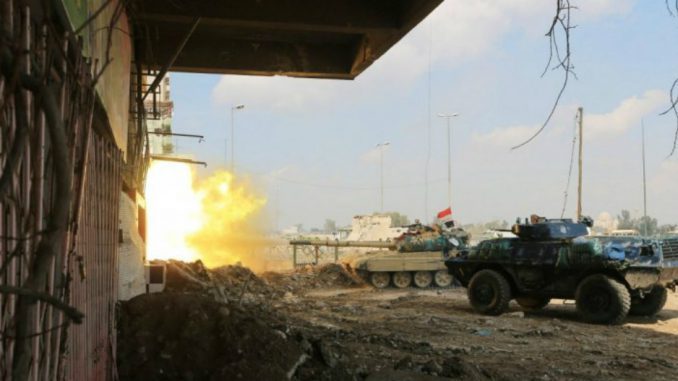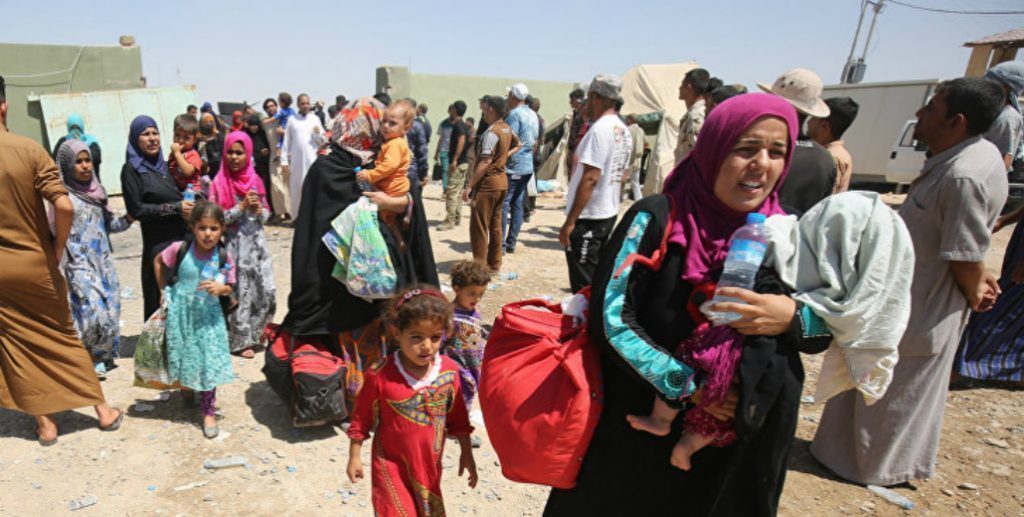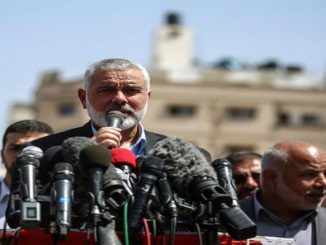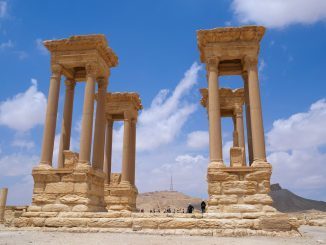
US-backed Iraqi forces said they killed the commander of Islamic State in Mosul’s Old City while the battle was focused on a strategic bridge crossing the Tigris River and ISIS militants were defending their shrinking territory fiercely.
At the height of its power two years ago, Islamic State ruled over millions of people in territory running from northern Syria through towns and villages along the Tigris and Euphrates river valleys to the outskirts of Baghdad in Iraq.
It was the mosque of Mosul where al-Baghdadi declared his Caliphate and named himself as the ruler of all Muslims from Mosul’s Great Mosque after his forces swept through northern Iraq in 2014.
However, ISIS’s territory is shrinking rapidly since last year as the US-led coalition, the Turkish-backed forces, and the Russian-backed Assad regime forces have fierce fights against its forces in both Syria and Iraq.
The United States is providing air and ground support to Iraqi and Kurdish forces trying to dislodge the hardline group from Mosul.
Iraqi forces captured the eastern side of Mosul in January after 100 days of fighting and launched their attack on the districts that lie west of the Tigris river on Feb. 19.
Islamic State militants who retreated across the Tigris river to western districts also regularly target civilian areas under government control in the east with mortars and grenades dropped from drones.
Several thousand militants, including many who traveled from Western countries to join up, are believed to be in Mosul among a remaining civilian population estimated at the start of the offensive at 750,000.
They are using mortars, sniper fire, booby traps and suicide car bombs to fight the offensive carried out by a 100,000-strong force made up of Iraqi armed forces, regional Kurdish peshmerga fighters and Iranian-trained Shi’ite paramilitary groups.
Killing ISIS commander
Federal police killed the military commander of the Old City, Abu Abdul Rahman al-Ansary, during operations to clear Bab al-Tob district, a federal police officer said.
With many ISIS leaders having already retreated from Mosul, Ansary’s death comes as blow to the militants as they defend their shrinking area of control street-by-street and house-by-house.
As Iraqi forces fight Islamic State militants deeper into western Mosul, they face increasingly stiff resistance, with the jihadists using mortar and sniper fire to try to hold off a U.S.-backed offensive to drive them out of their last major stronghold in the country.
The fight has taken its toll of dead and wounded on Iraqi soldiers, special forces and police units. The military has not published the number of its own casualties.
Islamic State’s tactics, which include taking cover among the civilian population, have also slowed advances in some areas, the closer the battle gets to the more crowded city center.
This resistance was slowing the advance of special forces units on espicially on the newly-opened front of the Iron Bridge linking western and eastern Mosul, officers said.
Capturing the Iron Bridge would mean Iraqi forces will hold three of the five bridges in Mosul that span the Tigris, all of which have been damaged by ISIL (also known as ISIS) and US-led air strikes.
The southernmost two have already been retaken.
“We are still moving toward the Iron Bridge. We are taking out snipers hiding in the surrounding building,” Brigadier-General Mahdi Abbas Abdullah told Reuters news agency.
Near the Mosul Museum, Iraq forces used armored vehicles and tanks to attack snipers pinning down troops clearing areas around the bridge.
For much of Tuesday, the troops were within 100m (330 feet) of the bridge.
“It’s very key for our forces to secure the riverside and prevent ISIS militants from turning around our advancing forces,” a Rapid Response spokesman said in the morning, using an Arab acronym for Islamic State.
They expected to gain control of the Iron Bridge and the nearby area by the end of the day, he said.
“Seizing the bridge will help further tighten the noose around ISIS fighters entrenched inside the old city,” he said.
Hundreds of thousands flee
As fighting intensified on Tuesday, civilians streamed out of western neighborhoods recaptured by the government. Some pushed children and sick elderly relatives in handcarts and wheelbarrows.
Soldiers packed them into trucks on the Mosul-Baghdad highway to be taken to processing areas.
As many as 600,000 civilians are caught with the militants inside Mosul, which Iraqi forces have effectively sealed off from the remaining territory that Islamic State controls in Iraq and Syria. The Iraqi forces include army, special forces, Kurdish peshmerga and Shi’ite militias.
More than 200,000 Mosul residents have been displaced since the start of the campaign in October. The Ministry of Immigration and Displacement said on Tuesday that in recent days, almost 13,000 displaced people from western Mosul had been received seeking assistance and temporary accommodation each day.
That number may still rise sharply. The United Nations last month warned that more than 400,00 people, more than half the remaining population in western Mosul, could be displaced. Fears of more chemical attacks are driving some people out.
“up to 450,000 are expected to make their way to the camps,” Lise Grande, humanitarian coordinator for the UN Assistance Mission in Iraq, said.
One civilian said that mortar rounds were falling as they fled. They took advantage of the army retaking their district to get out.
“ISIS wanted us to move to their areas but we escaped when the army arrived,” he said.
The World Health Organization has set up multiple trauma stabilizing points (TSP), as close to the frontlines as possible, Grande said. There, wounded civilians are given emergency care before being transporting to the nearest hospital.
“What is striking about this crisis is that half of the casualties are civilians,” said Grande.”TSP areas have had to dramatically expand. We were not expecting this amount of casualties.”
Out of the entire IDP population at the refugee camps, 56 percent are children under 18.
There are about 1,000 unaccompanied children who have been separated from their families while attempting to flee since the offensive on western Mosul began, said Grande. “They [unaccompanied children] are the most vulnerable. They require the most intensive care we provide.”




